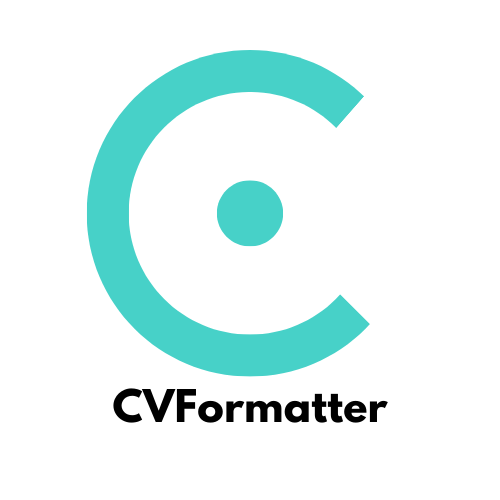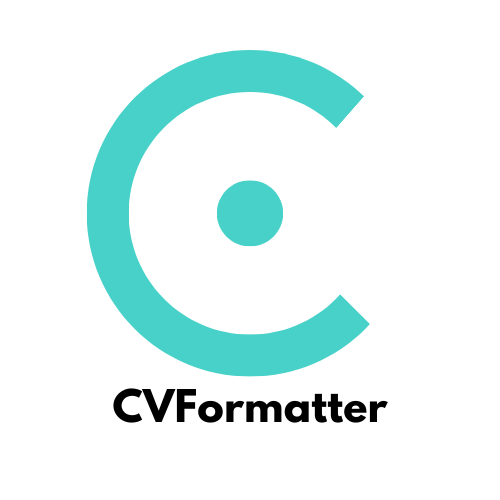CV Branding Strategies Every Recruiter Should Know

In today's tough job market, CV branding is very important. It helps people stand out by showing their special skills and matching their profiles with what employers want. Companies with strong brands spend 50% less on hiring and get better applicants. By helping job seekers make a CV that shows their personal brand, you can help them find the right jobs.
CV branding also improves employer branding. Studies show a 68% rise in clicks on job sites and a 44% increase in applications because of focused branding. As a recruiter, you can help candidates make CVs that show their talents and impress hiring managers. This makes candidates more visible and boosts your company’s image in the job market.
Key Takeaways
CV branding helps people shine by showing their special skills and work history.
A good CV with strong branding gets noticed and boosts interview chances.
Using neat templates and simple layouts makes CVs look better to employers.
Matching CVs with online profiles builds trust and improves personal branding.
Keep CVs tidy and error-free to impress hiring managers professionally.
Understanding CV Branding
What Is CV Branding?
CV branding means turning a CV into a strong tool. It shows a person's unique skills and career story. It is more than just listing jobs and qualifications. Instead, it tells a clear story about your strengths and achievements. This helps your CV stand out in a crowded job market.
"A branding statement is a short sentence showing your best skills," says Rob Stevenson, founder of BackupLABS.
Adding a branding statement makes your CV grab attention. It also shows employers why you are valuable.
Why CV Branding Matters in Recruitment
CV branding is very important in recruitment. It helps job seekers show their personal brand clearly. This makes them more attractive to hiring managers. A good CV matches what employers want, increasing interview chances. Recruiters who guide candidates in branding find better job matches.
Branding helps candidates look professional and fit for specific roles. This improves the quality of applications. It also builds your reputation as a recruiter who finds great talent.
The Impact of Resume Branding on Candidate Success
Resume branding helps candidates succeed in job searches. A branded CV leaves a strong impression on hiring managers. It also matches industry needs and employer preferences. This is key for standing out in tracking systems.
For job seekers, a branded CV leads to better job chances. It shows their personal brand in a way employers like. Recruiters can help candidates reach goals by crafting CVs that highlight their value and fit the job market.
Building a Personal Brand Through Candidate Resumes

Finding Special Skills and Strengths
To build a strong personal brand, find what makes candidates unique. This helps resumes show their best qualities. You can use these ways to discover their strengths:
Behavioural tests show how they handled past situations.
Skills tests measure their abilities and experience.
Cultural fit checks see if they match a company’s values.
Focusing on these areas helps candidates show their talents well. A resume showing their special skills grabs attention and improves job chances.
Matching Personal Branding with Employer Needs
Creating a personal brand isn’t just about being different. It’s also about matching what employers want. A good personal brand that fits employer needs can bring new chances by:
Opening more job options through better connections.
Showing shared values, which attracts the right employers.
When personal branding fits employer needs, resumes become stronger. This helps candidates look like the perfect choice for the job.
Writing a Memorable Career Story
A career story makes a resume more interesting and personal. It lets candidates share their journey in a way that connects with employers. For example:
A story-based resume shows personality and problem-solving skills.
It gives clear examples to use in interviews.
It highlights unique traits, helping candidates stand out.
By using storytelling, candidates can make a lasting impression. This approach makes resumes more engaging and easy to remember.
Actionable Resume Branding Strategies
Making CV Design More Effective
Picking Professional Templates
A good template helps create a strong first impression. Choose simple, neat designs that are easy to read. Avoid fancy or overly decorated templates that distract from the content. A clear layout shows professionalism and matches what employers expect. Research shows that neat templates improve how employers view candidates.
Improving Readability with Formatting
Formatting makes your CV easier to understand. Use bullet points to break up long paragraphs and highlight key facts. Add clear headings to organise details in a logical way. Keep the font size and style the same throughout. Studies show that readable CVs help recruiters find important details faster, making candidates look better.
Adding Branding Features (e.g., logos, colours)
Small branding touches can make your CV stand out. Use colours carefully to highlight sections without making it too busy. Add logos of well-known companies you’ve worked for to impress employers. But don’t use random logos, as they might give a bad impression.
Keeping Resumes and Online Profiles Consistent
Matching CVs with LinkedIn and Other Platforms
Your CV and LinkedIn profile should share the same details. Make sure job titles, dates, and achievements match on both. This builds trust and shows you are reliable. Recruiters often check online profiles after reading CVs, so keeping them consistent strengthens your personal brand.
Using the Same Style and Tone
A strong personal brand needs the same tone and style everywhere. Use similar words, layouts, and designs in your CV and LinkedIn profile. This makes your brand clear and helps employers remember you.
Adjusting Resumes for Specific Jobs and Fields
Using Keywords for ATS Systems
Many companies use systems to scan CVs for keywords. Look at the job description to find important terms and add them naturally to your CV. This helps your CV pass the first checks and reach the hiring manager.
Showing Achievements for the Role
Change your CV to focus on achievements that fit the job. Use numbers to show your success, like increasing sales by 20% or leading a big project. This makes your CV more interesting and relevant to the job.
Changing CVs for Different Industries
Different jobs need different CV styles. Creative designs work for marketing, but simple layouts are better for finance. Learn what each industry prefers and adjust your CV to match. Ask experts in the field for advice to improve your CV further.
Using Tools to Improve CV Branding
Saving Time with CVFormatter
Using tools like CVFormatter can save lots of time. This AI tool helps format CVs by doing repetitive tasks for you. It picks out key details, fixes mistakes, and adds consistent designs. This makes every CV look neat and professional. It also ensures they match your agency’s style. By automating these tasks, you can focus on more important recruitment work.
CVFormatter also turns CVs into standard profiles. This makes comparing candidates easier and fairer. It removes differences and keeps the hiring process equal. The tool can handle many CVs at once, making it faster to manage applications.
Why AI Tools Help Recruitment Agencies
AI tools like CVFormatter have many benefits over old methods. They can cut hiring time by half, helping you fill jobs quickly. These tools also reduce bias, with most recruiters saying AI makes hiring fairer. This creates a more equal recruitment process.
Other advantages include better decisions and happier candidates. AI tools find the best matches for jobs, leading to better hires. They also create polished CVs that impress employers. Using these tools can improve your agency’s image and attract great talent.
Feature | AI Recruitment Tools | Traditional Methods |
|---|---|---|
Faster Hiring | Up to 50% quicker | Not available |
Less Bias | Not available |
Making Recruitment Faster and More Reliable with CVFormatter
Speed and reliability are key in recruitment. CVFormatter handles boring tasks, saving up to 80% of your time. This lets you spend more time talking to candidates and clients. The tool works well with other systems, keeping data correct and organised.
CVFormatter also keeps all CVs looking the same. This gives a professional look that impresses clients and job seekers. Its ability to create standard profiles makes comparing candidates simple. These features make your work smoother and boost your agency’s reputation.
Avoiding Common CV Branding Mistakes
Adding Too Much Unnecessary Information
Putting too much in a CV can confuse employers. They spend only 6-7 seconds looking at each CV. Extra details might hide the important skills they need. Focus on skills and achievements that match the job. Don’t list every job or hobby you’ve ever had. For example, instead of mentioning a summer retail job for a tech role, show skills like teamwork or problem-solving.
Mistakes include listing tasks instead of results. Employers like numbers, such as "boosted sales by 20%," not "handled sales." Keep your CV short—one page is best—to keep their attention.
Tip: Change your CV for each job to make it more relevant.
Using Plain Templates Without Customisation
Basic templates are easy but don’t help you stand out. Studies show 72% of employers like simple designs over fancy ones. A clean look makes your skills clearer, while busy designs distract from them.
Key Findings | Details |
|---|---|
Preference for Simplicity | 72% of employers like simple templates better than creative ones. |
Impact of Visual Clutter | Simple layouts focus on skills; flashy ones distract. |
Importance of Content | Employers care more about skills than creative designs early on. |
Make the template match your personal style. Add small touches like a nice colour scheme or a unique header. Don’t use the same template for every job, as it might seem lazy.
Skipping Proofreading and Checking for Errors
Mistakes in a CV can leave a bad impression. Spelling errors, grammar mistakes, or messy layouts show poor attention to detail. Employers may think this looks unprofessional and reject the CV. Checking for errors makes your CV look polished and neat.
Evidence Description | Impact on Resume Success |
|---|---|
Shows why careful checks are needed for a good impression. | |
Clean fonts and neat bullet points make reading easier. | Highlights why quality checks improve readability. |
Honest and accurate achievements build trust. | Proves why proofreading avoids exaggeration or mistakes. |
Always check contact details, as wrong ones can stop job offers. Use tools or ask someone to review your CV for errors. A well-checked CV shows you are professional and boosts your chances of success.
CV branding is very important in hiring. It helps job seekers get noticed and succeed. Recruiters can help by making CVs show strengths and match job needs. Tools like CVFormatter make this easier by fixing layouts and keeping them neat. Using these ideas can make hiring better and improve your agency’s image. Start using these tips now to help both job seekers and employers.

